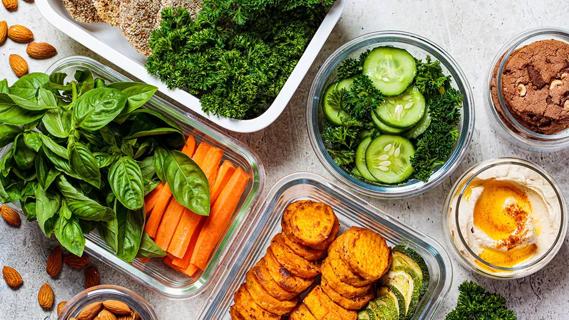Smart tips for eating well when eating out

Contributor: Anna Taylor, MS, RD, LD, CDE
Advertisement
Cleveland Clinic is a non-profit academic medical center. Advertising on our site helps support our mission. We do not endorse non-Cleveland Clinic products or services. Policy
When you go out to a restaurant, do you know the signs that food is mostly premade?
Most restaurant food does involve some premade ingredients. This allows the food to be prepared quickly and consistently, which appeals to people who want fast service and low prices while expecting their meals to taste the same each time they visit.
Restaurants may use premade sauces and condiments, soup mixes and canned broths, and even pre-breaded or fried chicken/fish or pre-seasoned meats.
At the very least, behind every famous fried chicken restaurant is a premade batter mix (as well as a bagged gravy reconstituted with water). Many of those “fresh” pastries were not made in the restaurant, but were instead shipped there by a supplier — maybe even after they had been already baked.
We all eat at restaurants sometimes, so it’s good to be smart about what you order (as some foods are more likely to be fresh than others).
You may not be able to tell that your meal was mostly premade by the time the food arrives to your table. Restaurants are skilled at providing meals that look fresh — even if they aren’t. It may have been assembled from premade ingredients by skilled hands, but that doesn’t mean the ingredients were combined from scratch in-house.
Advertisement
Here are some ways to spot premade foods at your favorite restaurant:
Here are some tips to help you regain some control over your restaurant choices.
Strategy #1: Choose simply prepared foods that are less likely to be premade.
Some simple swaps can help. Here are a few examples:
Strategy #2: Look up nutrition facts for restaurant foods – including ingredients lists.
Nutritional information are typically available online for chain restaurants. Be sure to check out your favorite entrees at your favorite restaurants. Look at what the ingredients actually are, not just how many are listed.
Strategy #3: Limit restaurant food and how often you go.
Shoot for going to restaurants no more than 1-2x/week. Also focus on limiting the portion you consume because restaurant portions are nearly always too much food.
The tendency for restaurants to use premade ingredients can mean some not-so-desirable nutritional side effects, such as extra sodium, sugar, and fat added to the foods during processing.
In general, the more processed a food is, the fewer actual nutrients it contains.
In addition, it’s a lot more difficult to have restaurants adjust a dish to meet your dietary needs when the kitchen is not making each dish “to order.”
Example: Want a piece of baked chicken with no added salt? Well, the kitchen may not add salt to it, per your request, but even the line cooks may not realize the chicken was likely already salted before it arrived at the restaurant.
One of my personal pet peeves from the premade ingredient phenomenon is simply consumer ignorance of what is in their food. How can people make a good nutritional choice if they don’t have a way to know what they’re eating?
It’s rare to find a restaurant that purchases the vast majority of its ingredients as whole foods (produce straight from the farm, for example). Usually, restaurants use food distributors to procure their ingredients, which can mean lots of frozen, canned and jarred processed foods.
When you go to a restaurant, arm yourself with knowledge. If you are working hard to eat in a weight-conscious, healthy way, don’t let premade food derail you.
Advertisement
Keep in mind that if you aren’t sure about a particular menu item, you can always ask your server if it’s made in-house.
Advertisement
Learn more about our editorial process.
Advertisement

With a focus on internal cues for hunger and fullness, this eating style may revolutionize your relationship with food

Review the ingredients, watch for sugar and fat, and choose one with the right amount of protein for your needs

A typical recommended balanced diet is half fruits and veggies, a quarter protein and a quarter grains

Foods high in protein, fiber and water can help keep hunger at bay

This quirky food trend is harmless, as long as you’re getting enough protein, fiber and healthy fats

This vital nutrient helps your brain and body in many ways — and most of us need more of it

Wrapped or sandwiched, try to choose fillings and condiments that are minimally processed, low in saturated fat and high in fiber

Set yourself up for success by carefully choosing your recipes, storage containers and prepping day

Babies can get congested easily, but you can calm their cough by keeping them hydrated, using nasal drops and running a humidifier

Weight loss may cause loose, sagging skin and muscle loss to your rear

Several conditions, like vitiligo and fungal infection, can cause a loss of pigmentation, leading to white spots or patches on your skin